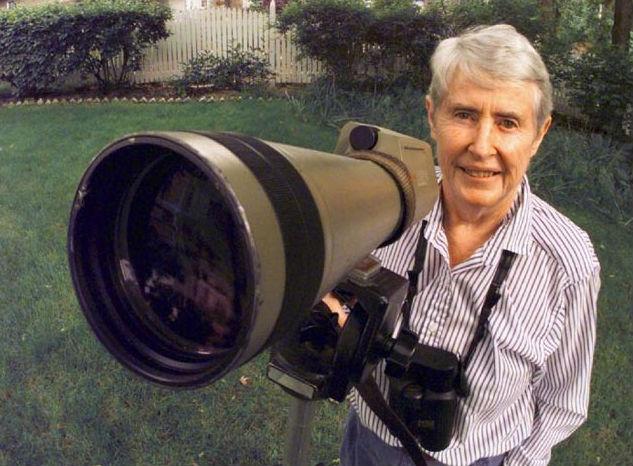Phoebe Snetsinger: woman who documented more than 8,000 bird species celebrated in Google Doodle
A diagnosis of cancer pushed Ms Snetsinger to follow her dreams and break a world record - but she suffered injury, gang rape and ultimately death along the way

It was the sight of a Blackburnian Warbler that determined the fate of a 34-year-old Minnesota housewife.
Phoebe Snetsinger, the inspiration for a new Google Doodle, was the woman who made her life’s work of documenting more than 8,300 bird species - the first person to do so.
The 9th June 2016 would have been her 85th birthday.
Yet it was only just before her 50th birthday, when she was diagnosed with cancer, that the bored and frustrated housewife turned her pastime of bird-watching into an all-consuming obsession.
The Google Doodle comes at a time when there is growing interest from girls and women in birding. A new Facebook group called World Girl Birders has more than 1,900 members.
But in 1981, the bird-watching community was male-dominated.
But that didn’t stop Ms Snetsinger, the author of her memoir: “Birding on Borrowed Time”, when she was told she had a “fatal” melanoma and she had less than a year to live, of setting out to see the world.
Her first tour after the diagnosis was in Alaska. She then traveled across all seven continents, aided by her late father’s inheritance, to document the world’s birds. During a three-week trip in Kenya, she saw 500 different bird species.
There are now around 10,000 bird species, according to the American Birding Association.
Tony Bennett, who led Ms Snetsinger on her first ever birding tour of Northern Mexico, told The Independent that she was a “consummate craftsman of bird-watching” and that she was never to be seen without her binoculars or telescope.
“Bang, she had a scope on that bird before anyone had a scope to their face,” he said. “She was intense, and knowledgable. She was the most interesting person I have ever met."
On that same tour she missed her chance to document the rare Bumblebee hummingbird - she already had documented around 7,000 species by this stage - as a group of students at the mountain research station deliberately directed her to sit for hours at an overlook where she was unlikely to get a glimpse.
“She never found out [about the prank],” said Mr Bennet. “I only found out a few years ago. If I’d known I would have exploded."
The UK's top birds 2018
Show all 10Her trips were fraught with danger, including a shipwreck and earthquakes. But the daughter of an advertising magnate embraced her competitive side, determined to cram in as much learning and exploration into the time she had left.
“Birding has meant a variety of things to many different people,” Ms Snetsinger once wrote, “but for me it has been intricately intertwined with survival.”
She continued to bird “on borrowed time” for another 17 years, spending four months of the year abroad, traveling, recording bird sounds, studying photographs, visiting museums and keeping a catalogue of detailed notes with index cards.
“People would get excited when they found out they’d be on a tour with her, and were honored when she took time out to help them in the field,” wrote Olivia Gentile, author of “Life List: A Woman’s Quest for the World’s Most Amazing Birds”. “Even catching a glimpse of her was thrilling, as if she were a rock star.”
Yet the trips abroad took their toll. She reportedly missed her mother's funeral and her daughter’s wedding to attend birding tours. She injured her knee on a mountain trail and sustained a permanently crippled arm after she broke her wrist.
Worse was to come. When she was staying at an isolated lagoon in Papua New Guinea, her guide was beaten up and she was gang-raped by five men. One year later, Ms Snetsinger revisited the scene of the attack.
The incredible feat of one woman’s epic journey of discovery and documentation came at the ultimate cost.
On her final trip abroad in Madagascar in November 1999, the van Ms Snetsinger was riding in rolled over and crashed.
The world's most famous bird-watcher died instantly, at the age of 68 - but not before she had spotted an exceptionally rare Helmet vanga.
In her memoir, she wrote: “If it's my last trip, so be it - but I'm going to make it a good one and go down binoculars in hand.”
Subscribe to Independent Premium to bookmark this article
Want to bookmark your favourite articles and stories to read or reference later? Start your Independent Premium subscription today.

Join our commenting forum
Join thought-provoking conversations, follow other Independent readers and see their replies